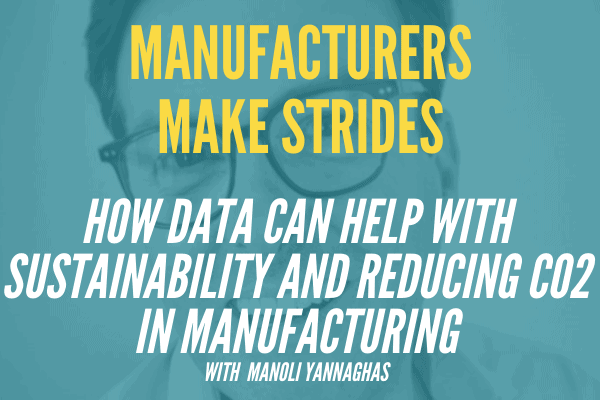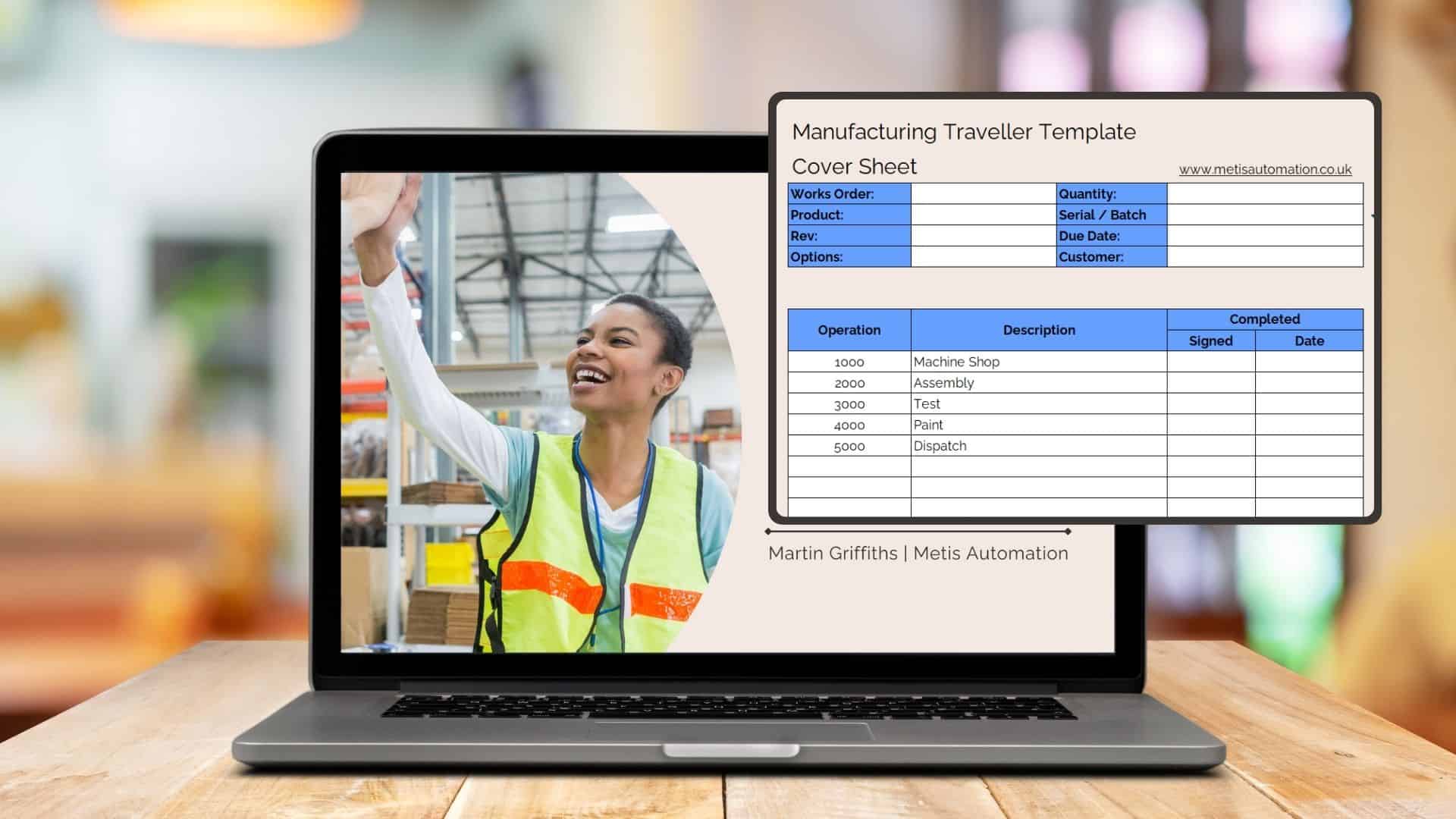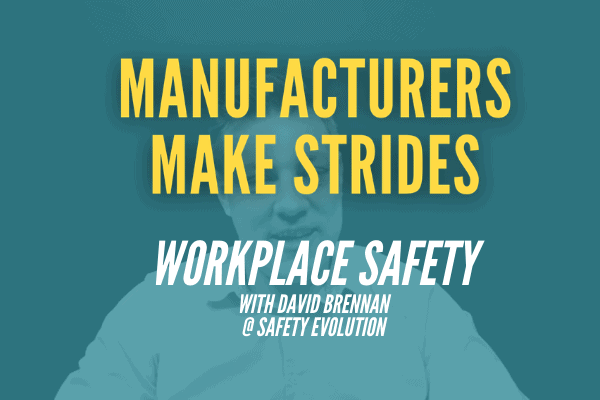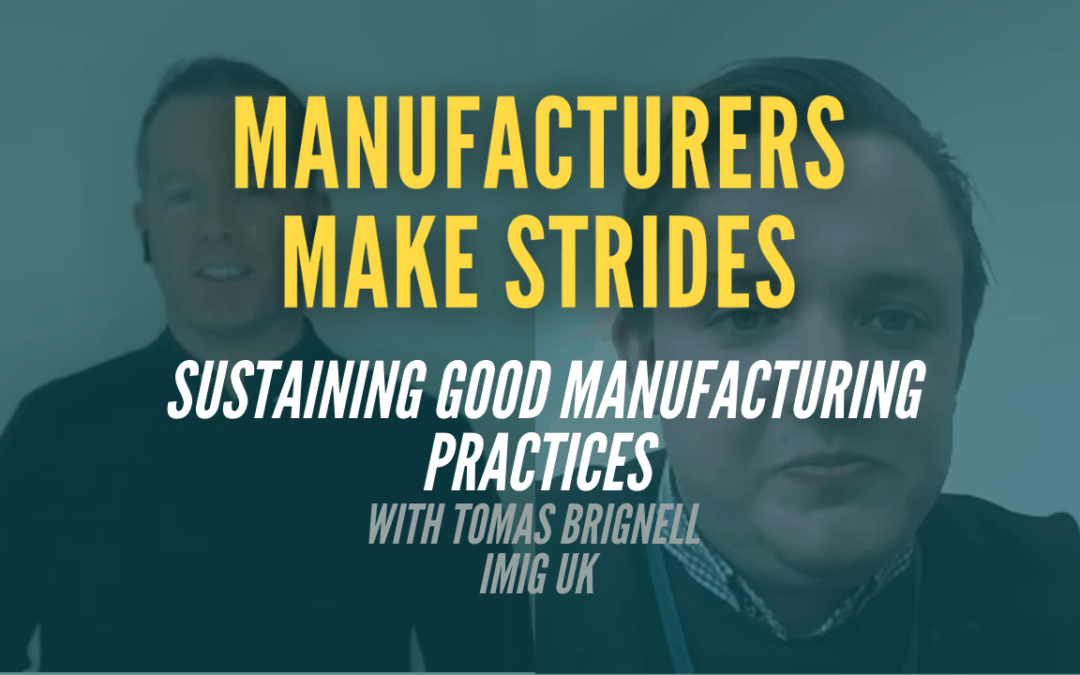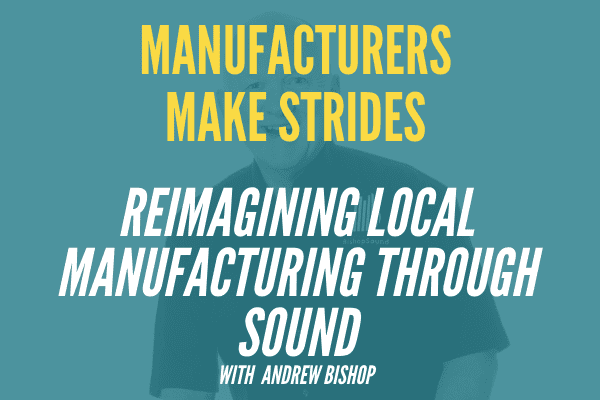
Reimagining Local Manufacturing Through Sound
How do you successfully bring manufacturing back to the UK when the sole source of sound equipment has been produced abroad for decades? How do you survive a lockdown when speakers are what you make for a living? These are just some of the many adversities Andrew Bishop has faced and conquered in his life. I’m excited to have had the opportunity to speak with Andrew, founder and CEO over at BishopSound – a proudly local-based manufacturer of reliable, affordable speakers for both public and private performance. According to Andrew, British sound is unique and can’t be found anywhere else in the world. He said NO to waiting for international shipments. Andrew is trailblazing the industry by getting everything done at home in the UK, reimagining the future of local manufacturing once and for all.
To say Andrew has some fascinating stories to share would be an understatement. From building his first speaker cabinet in 1972 at age 12 to receiving phone calls from clients in tears at the sound his speakers unleash – you don’t want to miss out on Andrew’s story of bringing his production back to the UK. Hit the button below to watch this awe-inspiring podcast right now.
How did you come about manufacturing speakers?
I made my first speaker when I was twelve. So I’ve been around sound for a long time. I had to go off and get a proper job for a few years to pay the mortgage. But I was brought back into sound when I purchased Carlsbro Sound for a pound. It was advertised in the Sunday Times, and I was the only one that answered the advert!
A good friend of mine said to me in 1999, Andrew, you need to be in British manufacturing. At that point in time, I said, you must be crazy! There was a mass migration to the Far East, and so for my friend to say to me, you should be in British manufacturing, everybody laughed and said no it’s finished, it’s the end. But I bit the bullet on New Year’s Eve in an office in Leeds I slid a pound coin across the table, and I was the proud owner of Carlsbro. It made the first PA system back in 1959 and did the sound for the Rolling Stones in 1963 with a 100 watt PA system.
Where there a lot of issues in the business that needed turning around?
It was losing 560,000 on a 960,000-pound annual turnover. So it was haemorrhaging cash like no tomorrow, which tested my skills in finance. But I really felt there was a passion from the workers. I remember going to the factory and saying, what do you do? And they said we make the best PA speakers and amplification in the world. They were on £3 an hour and it was fathers, sons, daughters, aunties, uncles, passionately making speakers and PA systems. So it’s got a tremendous heritage and a tremendous story.
So what is the British sound? What’s unique about it? And why is it highly sought after around the globe?
My feeling is this. The American sound is all top and bottom. There’s no mid-range. So, a lot of people with the American sound, like the thumping bass and the very high frequencies, but there’s not a lot going on in the middle. This makes some music sound a little strange. So if you play Hotel California, where there’s all those acoustic guitars on the front, you can’t pick them all out individually because the frequency at which an acoustic guitar works is in that mid-range frequency. Some people struggle to get a voice to sound, right because there’s no mid-range.
The German sound is exceptionally clinical. It’s very sharp, precise. There’s no warmth, it’s very edgy. And the Chinese sound, because I believe they’ve been brought up with the Pentatonic scale and Beijing opera, they love the high frequencies and base for them doesn’t seem to register.
The British sound is an exceptionally warm sound. I describe it as Grandma’s Gravy because it’s got richness. It’s got body, it’s got warmth, it’s got meaning, and it covers all the frequencies. So I think there’s no surprise that British Hi-Fi does very well globally as well. It’s because when our engineers do the sound, there’s nothing missing.
Tell us a bit about what BishopSound do now.
So I lost Carlsbro in 2008. when that credit crunch hit. We’d already moved everything out to the Far East, but when China got wind of the fact that there was a run on the banks in the UK, they basically said, that’s it we’re not dealing with you anymore. We’re not even giving you any facilities.
So, I then had to put Carlsbro into receivership, because I couldn’t find anybody to invest in the business. Then five or six years later a Nigerian customer rang me and said, Andrew, we want your sound back. We can’t get your sound. Make some speakers, put the name BishopSound on the front and we’ll give you an order for a 40-foot-high cube container. I said, no I’m not going to get back into all of that again. And he replied, you must because the sound that you create is the sound that we want for our churches in Africa.
So I started making speakers again, but this time differently. I stayed with China for the manufacture because the UK was in bits as far as manufacturing PA equipment and sound equipment. There were very few people left doing it. But I always wanted to come back and make speakers in the UK because I believe that’s the way to do it.
Bringing production back to the UK.
We got a small industrial unit in Ripon, next door to a mechanical engineer. His friend is a woodworking guy from the Southeast, who’d moved to Ripon. One of his passions was to make a CNC machine. So they knocked on my door and said, can we make some speakers for you, Mr Bishop? So they built a purpose-built CNC machine, which on the 25th September 2021 was commissioned by our local MP and we will be making purpose-made speakers in Ripon for the PA companies.
Now, as far as skills are concerned, electronics will be deployed in the programming of the CNC machine. We’ve been offered the use of an anechoic chamber in Derby University to test the speakers once they’re made. So we’ve been around the block a few times. We know what we’re aiming for and the sound we want. And we will be back making bespoke speakers in the United Kingdom for export globally
I recently had an enquiry for 206 speakers for Doah, and they needed them in four weeks’ time. We can do that. We can make pretty much any speaker, in any colour in the time that anybody wants. We’ve got control. We’re not waiting for shipments from the Far East, we’re not subject to minimum quantities. So for us, it’s the future and it restores our passion.
What are the biggest challenges you’ve faced in running globally successful businesses?
The biggest challenge is getting paid, so we never give credit. There are all kinds of people that will offer you solutions. Credit insurance is a great thing. But those credit insurance companies don’t pay out very quickly, and if you’re in manufacturing, cash is king. We have no bad debt in this business.
The second challenge is reaching out to the world. The great thing about the English language is that a lot of people speak it. In business, it’s not about sitting in a chair and doing everything from the screen. It’s about getting out there and being in the room with people to get their confidence. We’re very privileged we deal with probably about 180 countries on and off. When we go, we take a little bit of Yorkshire tea or some honey, and we just say, this is a taste of the United Kingdom, here’s what we’re about.
Are there any tools or techniques specifically that you think have helped you get to the position where you are today?
To get us through the last 18 months, we worked very closely with Innovate UK and Harrogate Borough Council with their raft of advisors and specialists. We go to people and if they haven’t got the answer, we ask if they know anyone who can help us.
So our business model is quite simple. We don’t employ anybody, we use freelances for everything that we do. We need to be talking to our customers and focusing on our strengths, so we use outside advisers and get other people to make the things and do all the other bits behind the scenes.
What’s the best way for people to get in touch with you who want to find out more about what you doing?
I make my mobile number freely available everywhere and if I can’t help someone, I will give them a phone number for somebody that can. And I think that treating others as you expect to be treated yourself and getting directly to the owner of the company shouldn’t be difficult. If you want to be in business and you want to go global, make yourself accessible and make yourself available to everybody.
Contact Andrew here.

